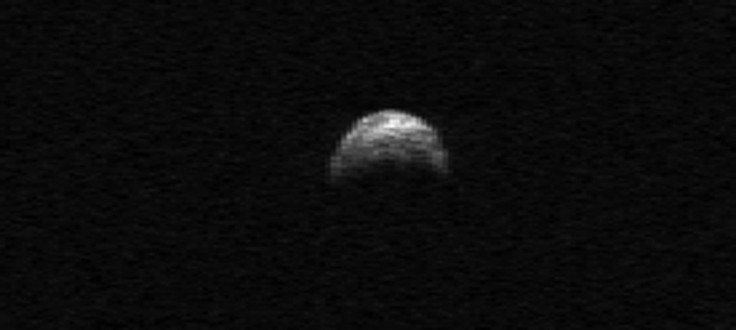Asteroid the Size of an Aircraft Carrier to Fly by Earth at a Close Distance on Tuesday [VIDEO]

An asteroid the size of an aircraft carrier is heading toward Earth and will fly by it closer than the moon on Tuesday, providing a rare observing opportunity to scientists, NASA said.
At the point of it nearest approach, asteroid 2005 YU55 will be within 201,700 miles (324,600 kilometers) of our home planet. However, there won't be any detectable effect on anything on Earth, including the planet's tides or tectonic plates, due to the asteroid's gravitational influence, the agency said.
Although asteroid 2005 YU55 is in an orbit that regularly brings it to the Earth's neighborhood, NASA said the 2011 encounter with Earth is the closest the space rock has come in at least 200 years.
"It is the first time since 1976 that an object of this size has passed this closely to the Earth. It gives us a great -- and rare -- chance to study a near-Earth object like this," astronomer Scott Fisher, a program director with the National Science Foundation, told Reuters.
Don Yeomans, a senior research scientist at NASA's Jet Propulsion Laboratory in Pasadena, Calif., said the asteroid's position and its orbit are well-known.
"There is no chance that this object will collide with the Earth or moon," Yeomans said.
NASA scientists have already started tracking asteroid 2005 YU55, which is about 1,300 feet wide, with the massive 70-meter (230-foot) antenna at the agency's Deep Space Network at Goldstone, Calif. The extraterrestrial rock will continue to be tracked for at least four hours each day from Sunday to Nov. 10.
"Radar observations from the Arecibo Planetary Radar Facility in Puerto Rico will begin on Nov. 8, the same day the asteroid will make its closest approach to Earth at 3:28 p.m. PST," NASA said in a statement.
NASA scientists hope to obtain images of the asteroid from Goldstone as fine as about 7 feet (2 meters) per pixel. They expect that the images would reveal key details about the asteroid's surface features, shape, dimensions, and other physical properties.
Asteroid 2005 YU55 will be visible from the Earth's northern hemisphere. However, it will be too dim to be seen with the naked eye. And it will be moving too fast for viewing by the Hubble Space Telescope, according to a Reuters report.
"The best time to observe it would be in the early evening on November 8 from the East Coast of the United States," Yeomans said. "It is going to be very faint, even at its closest approach. You will need a decent-sized telescope to be able to actually see the object as it flies by."
According to NASA, asteroid 2005 YU55 is one of about 8,500 near-Earth objects to be cataloged to date. There will not be another known approach of an asteroid this large until 2028.
Thanks to the Arecibo Observatory, a ghostly image of the C-type asteroid with resolution of 7.5 meters (25 feet) per pixel has been generated as of now. The image has revealed that the asteroid is spinning slowly, with a rotation period of about 18 hours; its surface is blacker than charcoal at optical wavelengths; and it is likely made of carbon-based materials and some silicate rock.
Watch the video here:
MUST READ: How to Spot the Close Encounter with Asteroid 2005 YU55 on Tuesday [PHOTOS & VIDEO]
© Copyright IBTimes 2024. All rights reserved.






















